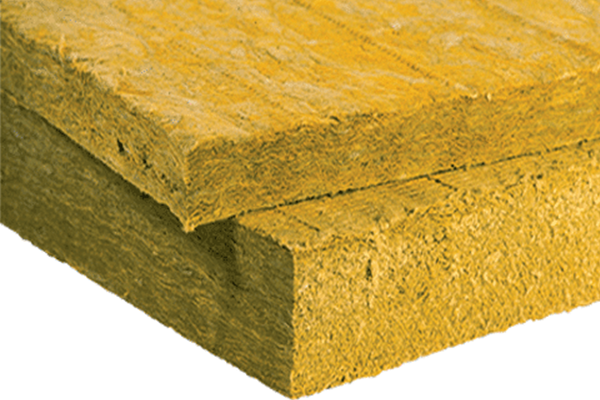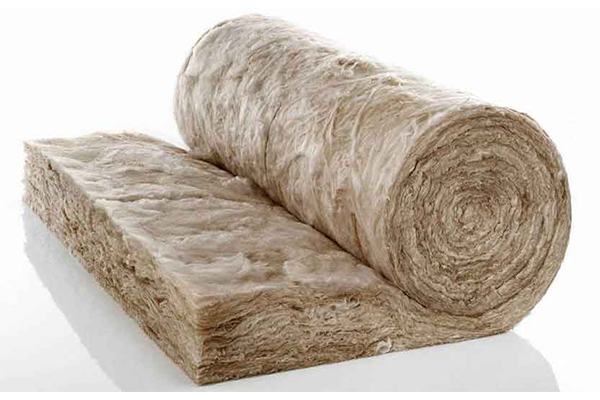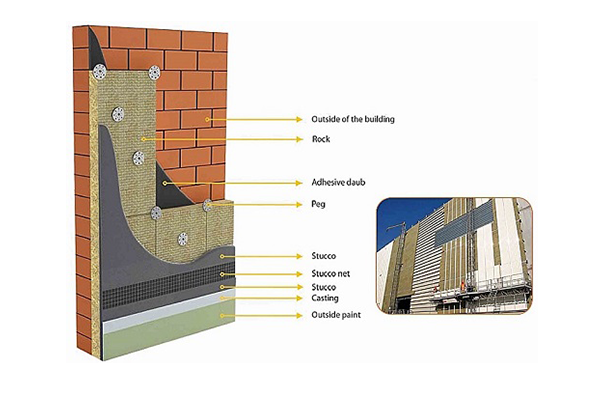Thermal conductivity
Thermal conductivity is one of the most important feature of thermal insulations. In thermodynamic, heat energy always tends to, by one or all three mechanisms of Convection, Conduction, and Radiation, move from a hot source to another cold source. This flow of heat energy will continue unless the both sources reach to a same temperature – which is known as equilibrium temperature. An insulation application, indeed, is to prevent the flow of energy by any of mechanisms which lead to the near stoppage of energy flow. This feature is actually the basis of the economization by insulations. In residential building, insulations are merely because of energy consumption reduction. For instance, the usage of a layer of rock wool with 5cm thickness will do as to a thick wall of old a building to keep inside warm and cold respectively in winters and summers. In general, the main application of insulation is to maintain a warm place warm and a cold place cold. The less conductive the insulator is the better quality it has. The thermal conductivity of rock wool is less than 0.04 w/m.ok .
Due to the Insulator features of constitutive of rock wool it enjoys a very low thermal conductivity coefficient. Therefore, it can be effective to prevent form losing energy and can lead to maintenance of a particular place’s temperature in the deigned range. It is worth a mention that the behavior of rock wool insulations varies in different Density and different temperature. Correspondingly, in order to use them properly they should be selected according to the operation conditions – which are the operating temperature and also the proper density for the temperature.
The opposite plot presents the share of thermal conductivity ratio of each influential factors in aheat transformation for different insulator with different density and in a particular temperature.
A remarkable point about this plot is that in very low or very high density of insulation, the thermal conductivity rises and normally a range of optimum density, in which range the insulation shows the best performance for the conductivity reduction, is presented for rock wool insulations.
It should be noted that rock wool insulation behaves variously in different temperatures. This means one cannot say, for instance, rock wool insulation with density of 80 will definitely have the best thermal conductivity in all different temperatures.
The next page plot represents the demeanor of thermal conductivity coefficient of Villa’s rock wool and slag insulations over the density in different operational temperatures. A quick contemplation about this plot can reveals interesting outcomes.
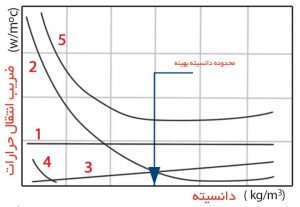
1. Contribution of conductivity of static air
2. Contribution of radiation
3. Contribution of conductivity of fiber
4. Contribution of conductivity of convection
5. Thermal conductivity of insulation
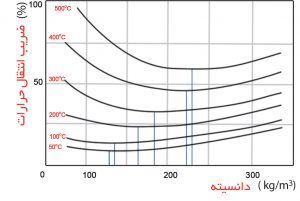 As you can see in the opposite plot, thermal conductivity coefficient behaves variously in different densities and temperatures. For instance, for the temperatures like 50oC and 100oC, insulations with density of 120 kg/m3 are the best choices.
As you can see in the opposite plot, thermal conductivity coefficient behaves variously in different densities and temperatures. For instance, for the temperatures like 50oC and 100oC, insulations with density of 120 kg/m3 are the best choices.
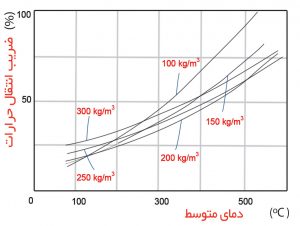 Using this plot, one can investigate the thermal conduction’s behavior in different operational temperatures but distinct density. For instance, in the average temperature of 300oC the best choice for the insulations’ density is 200 kg/m3.
Using this plot, one can investigate the thermal conduction’s behavior in different operational temperatures but distinct density. For instance, in the average temperature of 300oC the best choice for the insulations’ density is 200 kg/m3.

